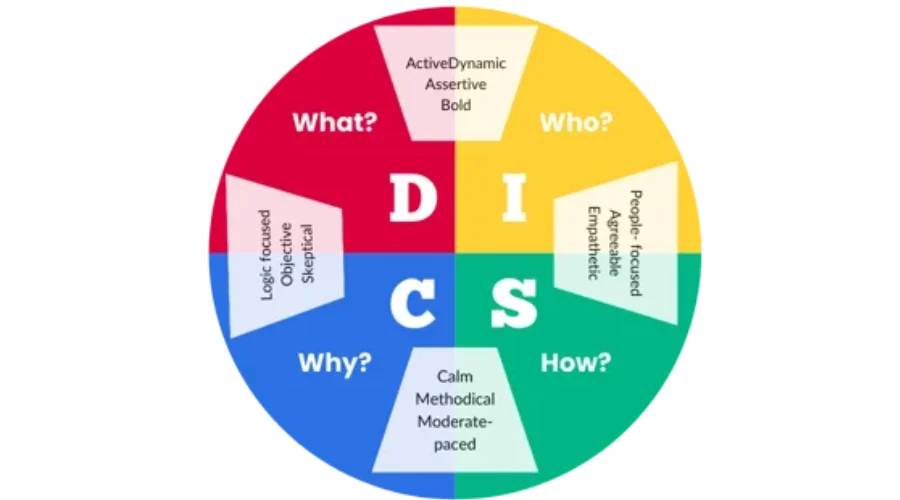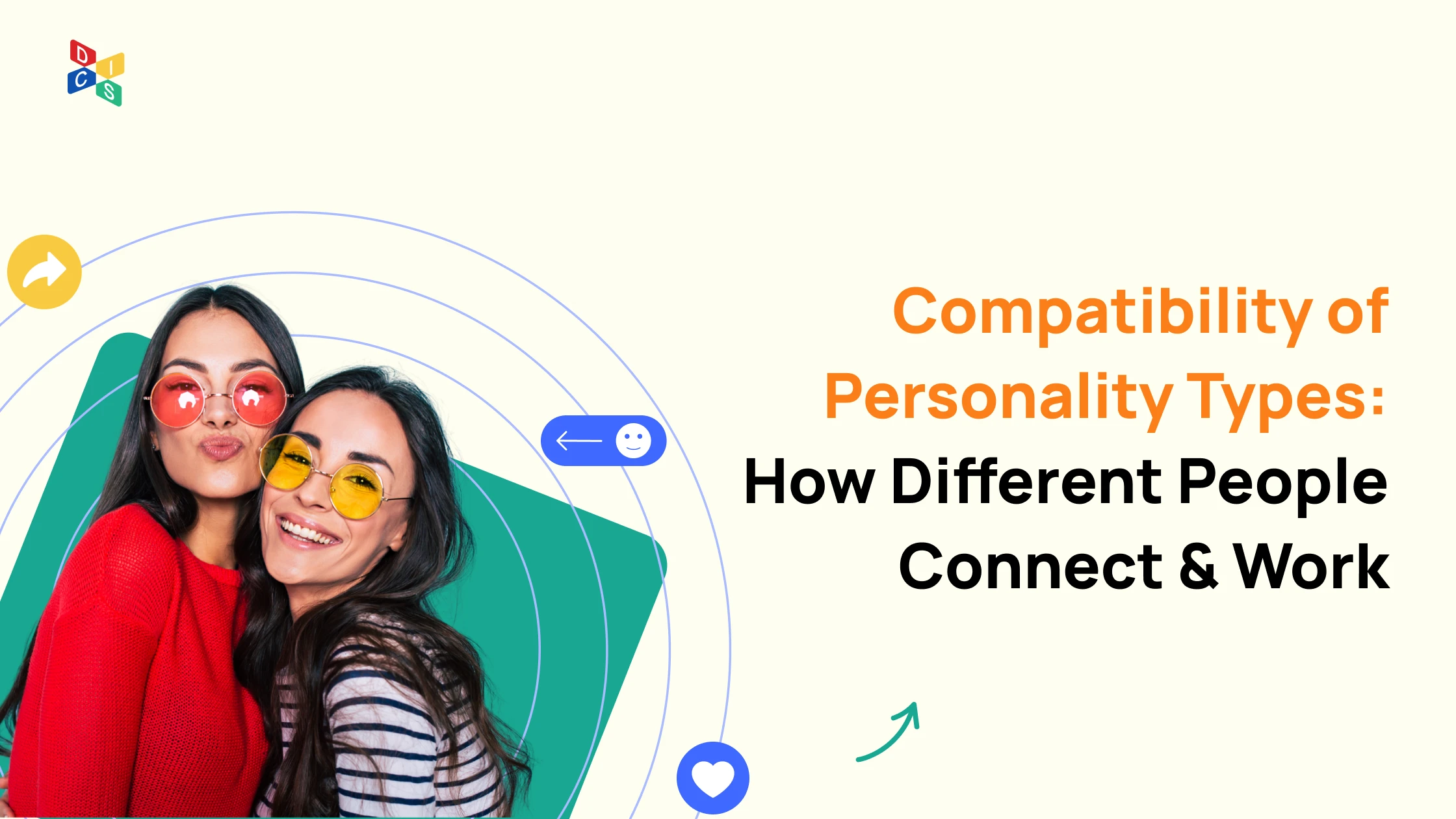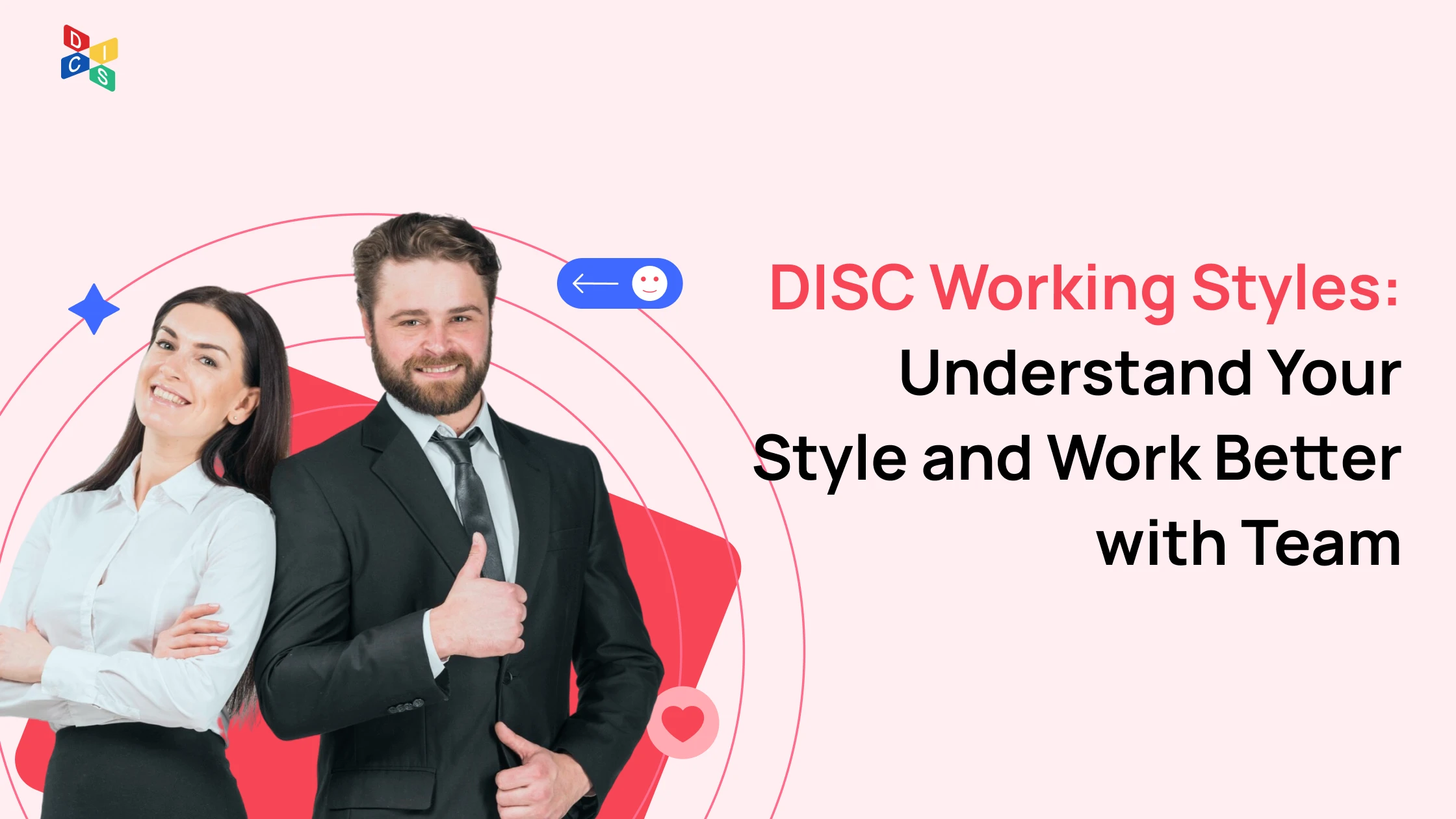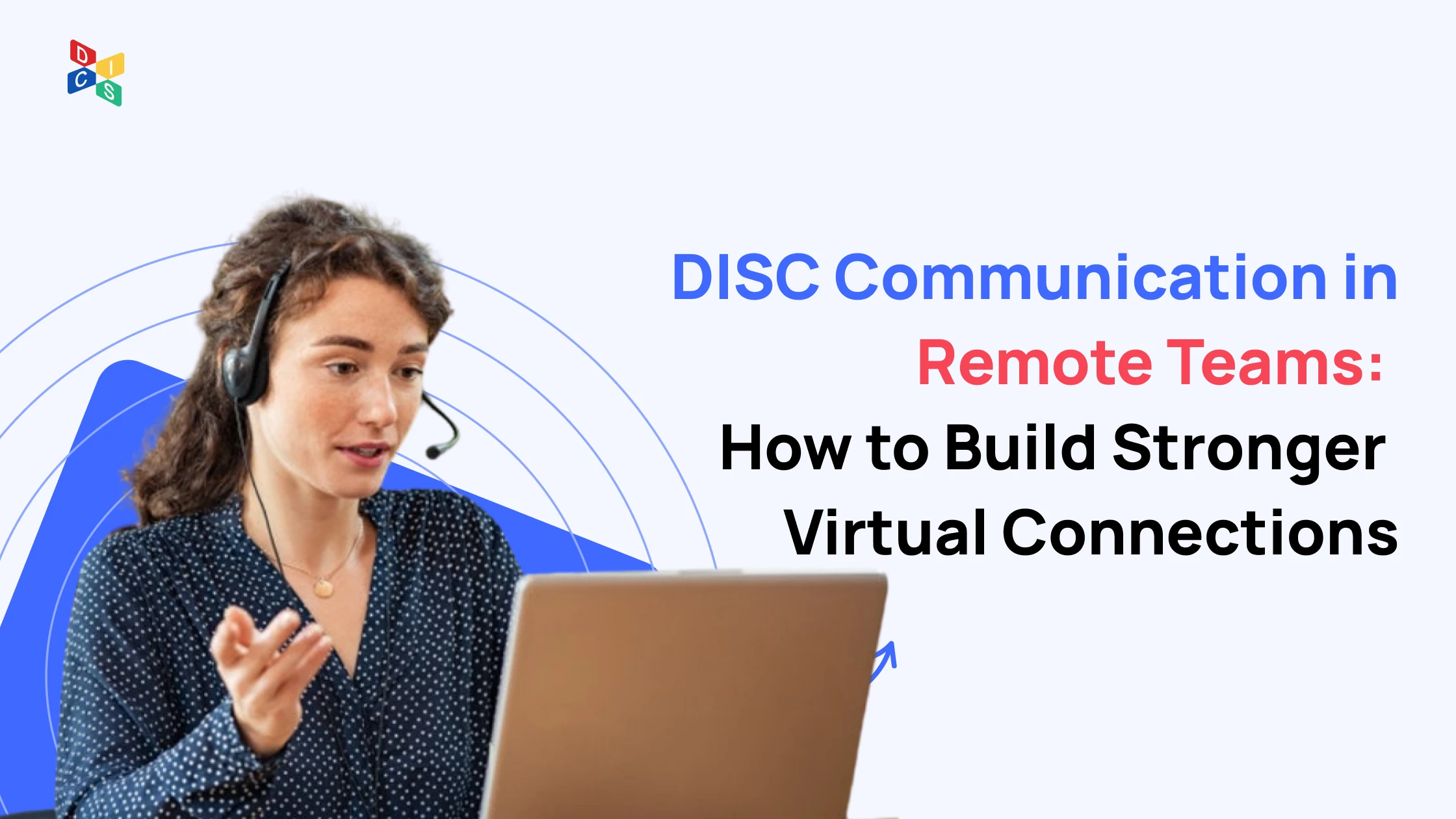Table of content
Selling to Different Personality Types: How to Adapt and Close Deals
Learn how to sell to different personality types with the DiSC model. Master your communication skills to connect, persuade, and close deals effortlessly.
Table of content
Each buyer has a unique way of thinking, deciding, and responding. A single sales approach can’t reach everyone. Mastering selling to different personality types helps you build trust and connect with people on a deeper level. The DISC model makes it easier to recognize what drives each customer and adapt your message accordingly. This guide will show you simple, practical ways to adjust your style and close more confident, lasting deals.
Why Personality Types Matter in Sales?
Knowing how people think helps you sell better. When you match your pitch to their style, they feel understood. They listen more. They trust you. Deals close faster.
Each buyer reacts in a unique way.
- Some want you to get straight to the point.
- Some prefer stories and proof.
- Others like steadiness, stability, and no hurry.
- Some demand facts, logic, and clarity.
Selling to different personality types also reduces misunderstandings. When your tone, speed, and level of detail fit the listener, conversations stay smooth and productive. You can answer questions more effectively and handle objections with ease.
This approach improves the entire sales process. It helps sales reps communicate with confidence, build lasting relationships, and close deals faster. Teams that master this skill see higher engagement and conversion rates because every message feels relevant and human.
In short, understanding behavior is not just a soft skill, it is smart strategy. Selling to different personality types lets you speak the buyer’s language, earn trust, and guide every conversation toward success.

Overview of the DISC Personality Model
The DiSC Personality Model helps sales teams understand how people think and make decisions. It divides human behavior into 4 buyer personality types. Knowing these types is key to selling to different personality types in a clear and confident way.
- Dominance (D): Fast-acting and goal-oriented. They want clear answers and control. Keep messages short and focused on results. Show how your product saves time and improves performance.
- Influence (I): Social and energetic. They value connection and teamwork. When selling to DISC personality types like them, use stories and real examples. Keep a friendly tone and make them feel included.
- Steadiness (S): Calm and patient. They value trust and consistency. Speak gently, listen well, and highlight long-term benefits such as safety and reliability.
- Compliance (C): Careful and detail-focused. They prefer facts and structure. When selling to different personality types in this group, provide clear data and honest proof. Avoid hype and emphasize quality.
If you do not know a person’s type, observe their behavior. Are they quick or slow to act? Do they lead with logic or empathy?
- Fast and logical often means Dominance (D).
- Fast and social usually means Influence (I).
- Calm and kind points to Steadiness (S).
- Careful and analytical fits Compliance (C).
By watching these signs, you can adapt your message and improve your results when selling with DISC. This simple approach makes every sales talk more natural, respectful, and effective.
Selling Strategies for Each DISC Personality Type
Understanding how each of the 4 personality types of buyers makes decisions helps you adapt your approach. The DISC model offers clear insights into how people prefer to communicate and buy. Mastering this framework allows you to personalize every conversation, making selling to different personality types smoother and more effective.
Selling to D-Type Buyers
D-type buyers are assertive, focused, and result-driven. They like control, speed, and efficiency.
What they want:
- To stay in charge of decisions.
- Quick, measurable results.
- Direct and confident communication.
How to sell: Keep your pitch short, focused, and strong. Open with the goal, show the result, and outline the fastest path to success. Use facts and data to prove your point. Avoid long stories or excessive details.
Example approach: “Here’s how we can cut your project time by 30% and save 20% in cost. You can choose between Plan A and Plan B.”
Negotiation tips: Give them control by offering limited options. Stay firm but respectful. Avoid small talk - get to the point. Confidence is key when selling to different personality types who value authority and achievement.
Selling to I-Type Buyers
I-type buyers are enthusiastic, social, and people-oriented. They love ideas and enjoy connecting with others.
What they want:
- Positive energy and engagement.
- Personal recognition and social value.
- Open and friendly interactions.
How to sell: Start with conversation, not data. Build a personal connection first. Tell stories about success and customer happiness. Use testimonials and examples that make them feel inspired. Keep your tone upbeat and genuine.
Example approach: “Let me tell you how another client like you built a strong team using this solution—it’s one of our best success stories.”
Negotiation tips: Acknowledge their ideas and enthusiasm. Frame the deal as something that boosts their image or helps others. Praise them sincerely. This style builds trust and makes different personality selling like the I-type much easier.
Selling to S-Type Buyers
S-type buyers are patient, calm, and loyal. They value stability and long-term support.
What they want:
- Trust and consistency.
- Clear explanations and proof of reliability.
- Time to think before deciding.
How to sell: Be patient and listen carefully. Speak clearly and slowly. Show them you care about their needs. Give examples of long-term success stories or steady results. Reassure them that you’ll provide support after the sale.
Example approach: “Our team stays with you from setup to daily use. You’ll always have direct contact with your support manager.”
Negotiation tips: Avoid pressure. Give them space to decide. Follow up gently and consistently. Focus on building a partnership. This calm, trustworthy tone works best when selling to different personality types that seek reliability.
Selling to C-Type Buyers
C-type buyers are analytical, detail-focused, and logical. They want accuracy and evidence before deciding.
What they want:
- Facts, data, and proof.
- Clear structure and logic.
- Time to analyze information.
How to sell: Come prepared with strong product knowledge. Share data, performance charts, and case studies. Stay formal and professional. Avoid emotional appeals—stick to logic and quality evidence.
Example approach: “This report shows a 97% uptime rate verified by independent audits. You can review all benchmarks here.”
Negotiation tips: Let them take their time. Provide all documentation. Always follow up with written summaries. Logical consistency builds trust - an essential part of selling to different personality types who rely on data to decide.

How to Identify a Customer’s Personality Type Quickly
Spotting a buyer’s personality early helps you succeed in selling to different personality types. You can do this by watching their body language, speaking pace, and question style.
Watch Customer’s body language
Physical cues say a lot:
- Customers who stand tall, move fast, and make strong eye contact are often Dominant (D) or Influential (i) types. They act with confidence and like quick results.
- Those with calm posture, soft gestures, and relaxed expressions usually fit the Steady (S) or Conscientious (C) group. They prefer trust, detail, and careful thinking. Reading these signs helps you adjust your tone and build comfort when selling to different personality types.
Notice how fast customer speaks
Speech speed gives instant clues:
- Fast and energetic talkers often show D or I traits. Keep your replies short, clear, and focused on action.
- Slow and measured speakers are often S or C types. Give them time to think and avoid rushing your message. Matching their pace builds trust and makes selling to personality types feel natural.
Listen to costumer’s questions
The way a buyer asks questions shows what they value.
- “What” questions mean they care about results — that’s a D style.
- “Who” questions point to people and teamwork — an I style.
- “How” questions reveal a steady, process-minded S personality.
- “Why” questions signal analysis and logic — a C type.
When you read these signs, you can tailor your words and tone to each person. This approach makes selling to different personality types smoother, more personal, and far more effective.
How to Build Trust and Adapt Communication
Trust is the foundation of every successful sale. When you tailor your message to match a buyer’s personality, your words sound genuine and your intent feels clear. Below are simple ways to strengthen relationships while selling to different personality types.
Lead with the right intent
To earn trust, start each conversation with awareness of what matters most to your prospect.
- With D types, stay clear and focused on outcomes. Show direction, not hesitation.
- With I types, be warm, open, and positive. Let your energy connect.
- With S types, speak calmly, show patience, and emphasize support.
- With C types, stay logical and factual. Use data to build confidence.
Match pace and message
People feel comfortable when your communication rhythm matches theirs. This is key in selling to different personality types.
- Keep it quick and direct for D types.
- Use expressive and upbeat language for I types.
- Maintain a relaxed, steady tone for S types.
- Be structured and detailed for C types. Matching pace helps you avoid friction and create a natural sense of trust.
Ask smart, focused questions
Good questions make prospects feel heard and respected.
- Ask “What” questions with D types to clarify goals.
- Ask “Who” questions with I types to discuss people and influence.
- Ask “How” questions with S types to plan next steps.
- Ask “Why” questions with C types to confirm logic and purpose. This adaptive questioning style improves clarity and deepens rapport in selling to DISC personality types.

Deliver feedback with care
Feedback should build trust, not tension. Keep it supportive and aligned with personality preferences.
- Stay concise and factual with D types.
- Use appreciation and empathy with I types.
- Be gentle, patient, and consistent with S types.
- Provide clear evidence and reasoning with C types. A thoughtful tone encourages cooperation and boosts success in selling to different personality types.
End with proof that builds confidence
Always close with evidence that matches what the buyer values most.
- Share performance data or efficiency gains for D types.
- Highlight testimonials or team success stories for I types.
- Offer guarantees and reliable support for S types.
- Present numbers, reports, and research for C types. Proof creates assurance, strengthens relationships, and turns trust into long-term loyalty.
Common Mistakes When Selling Across Personality Types
Many salespeople lose deals because they use the same approach for every customer. Each person buys for different reasons and reacts in their own way. To succeed, you must adjust your message to fit their behavior. Below are common mistakes to avoid when selling to different personality types.
- Using one style for everyone: Every buyer has a unique mindset. Using a single script or tone makes your pitch sound robotic. Adapt your words, pace, and tone to match the customer’s style when selling to personality types.
- Ignoring emotions: People show feelings through facial expressions, tone, and gestures. If you miss these signals, your message won’t connect. Listen closely and respond to what the buyer feels, not just what they say.
- Giving too many details to D or I types: Dominant and Influential buyers want results fast. Keep your pitch short and clear. Focus on benefits and outcomes. Long talks or heavy data can make them lose interest.
- Being unclear with C types: C-style buyers like facts and logic. Avoid vague claims. Give data, proof, and real examples to build their confidence in your offer.
- Rushing S types: Steady personalities need time to decide. Don’t pressure them. Be patient, offer support, and let them think before committing. Consistent follow-ups help them feel secure.
- Not matching communication style: Mirroring how a customer speaks builds comfort and trust. Match their tone, speed, and energy level. This makes conversations smoother when selling to different personality types.
- Taking control away from D types: D-style buyers like making their own choices. Instead of pushing one option, give two or three clear paths. Let them decide which fits best.
- Making claims without proof: Always back up your points with facts, reviews, or case studies. Solid evidence turns hesitation into confidence and supports your credibility.
By avoiding these mistakes, you can build stronger relationships, reduce misunderstandings, and close more deals. Smart sellers know that success depends on adapting - not repeating - when selling to different personality types.
Applying the DISC Model in Sales Team Training
Training a sales team with the DISC model helps every member understand how people think, act, and make decisions. It creates a strong base for selling to different personality types and improves how your team connects with customers.
Step 1: Identify team styles
Start by letting each salesperson take a DISC assessment. The results show whether they are more dominant, outgoing, patient, or detail-focused. Knowing their own profile helps them see how their behavior affects others and how to adjust their approach.
Step 2: Learn customer patterns
Teach your team to spot clues that reveal a buyer’s style. For example, some clients speak fast and want results. Others talk more about relationships or need time to analyze data. Understanding these signals helps the team match the right tone, pace, and message.
Step 3: Practice real conversations
Use short role-play sessions to practice selling to different personality types.
- With a D-type, focus on quick results and clear actions.
- With an I-type, use friendly energy and positive stories.
- With an S-type, stay calm, supportive, and patient.
- With a C-type, provide facts and strong evidence.
These exercises help salespeople feel confident in adapting their communication.
Step 4: Give feedback and coach
After calls or meetings, review what worked and what did not. Give clear feedback on how well the salesperson matched the buyer’s style. Encourage small changes and repeat training often to build lasting habits.
Explore our comprehensive guide on: Smart ways to apply DISC for team building at workplace!
Step 5: Measure progress
Track how each rep performs when selling to different personality types. Look at close rates, deal size, and client feedback. Use this data to improve training and focus on the styles that need more practice.

Conclusion
Mastering selling to different personality types helps you connect with people in a real and honest way. With understand result of the DISC test makes sales easier by showing how each person thinks and decides. When you match your message to the buyer’s style, trust grows faster, and results last longer. Great sales come from clear communication and empathy - not pressure. Every customer feels heard, valued, and ready to say yes.
FAQs
1. Which DiSC personality type is easiest to sell to?
There is no single easy type. It depends on how well you adjust. I-type buyers are usually open and friendly, so they respond well to energy and confidence. D-types like clear goals and fast results. The best way to succeed in selling to different personality types is to match your tone and style to the person you talk to.
2. How can I quickly identify a buyer’s personality type?
Watch and listen. A D-type speaks fast and wants quick answers. An I-type enjoys small talk and stories. S-types stay calm and take time to decide. C-types ask many questions and want data. Their speed, tone, and focus show their type. Spot these signs early to adapt and improve selling to personality types.
3. Can sales training improve adaptability across personality types?
Yes. DISC sales training teaches reps to read people and change their approach. Through short role-plays and real feedback, they learn to match any customer. This training builds confidence and flexibility. Over time, it helps teams master selling to DISC personality types with natural ease.
4. What’s the difference between DiSC and other personality frameworks in sales?
The DiSC model is simple and easy to use. It focuses on four traits: Dominance, Influence, Steadiness, and Conscientiousness. Other systems, like Myers-Briggs, are more complex and harder to apply. DiSC gives clear tools for selling to different personality types and helps salespeople connect faster in real situations.


Don't Let Your Potential Stay Hidden!
Take the DISC test today and discover your unique 'YOU', with deep insights into your true personality and potential.

Represents your instinctive behaviors and desires.
Shows the behavioral tendencies you think you should exhibit in specific situations.
Related articles
You may also be interested in
 DISCDec 02, 2025
DISCDec 02, 2025Compatibility of Personality Types: How Different People Connect & Work
Discover the Compatibility of Personality Types and how different traits connect. Learn how strengths and differences shape deeper, more lasting bonds.
 DISCNov 21, 2025
DISCNov 21, 2025DISC Working Styles: Understand Your Style and Work Better with Team
Unlock the power of DISC working styles to boost teamwork, communication, and leadership. Discover your style and learn how to work smarter with any team.
 DISCOct 24, 2025
DISCOct 24, 2025DISC Communication in Remote Teams: How to Build Stronger Virtual Connections
Learn how DISC communication in remote teams improves collaboration, reduces conflict, and helps leaders connect effectively in virtual environments.
